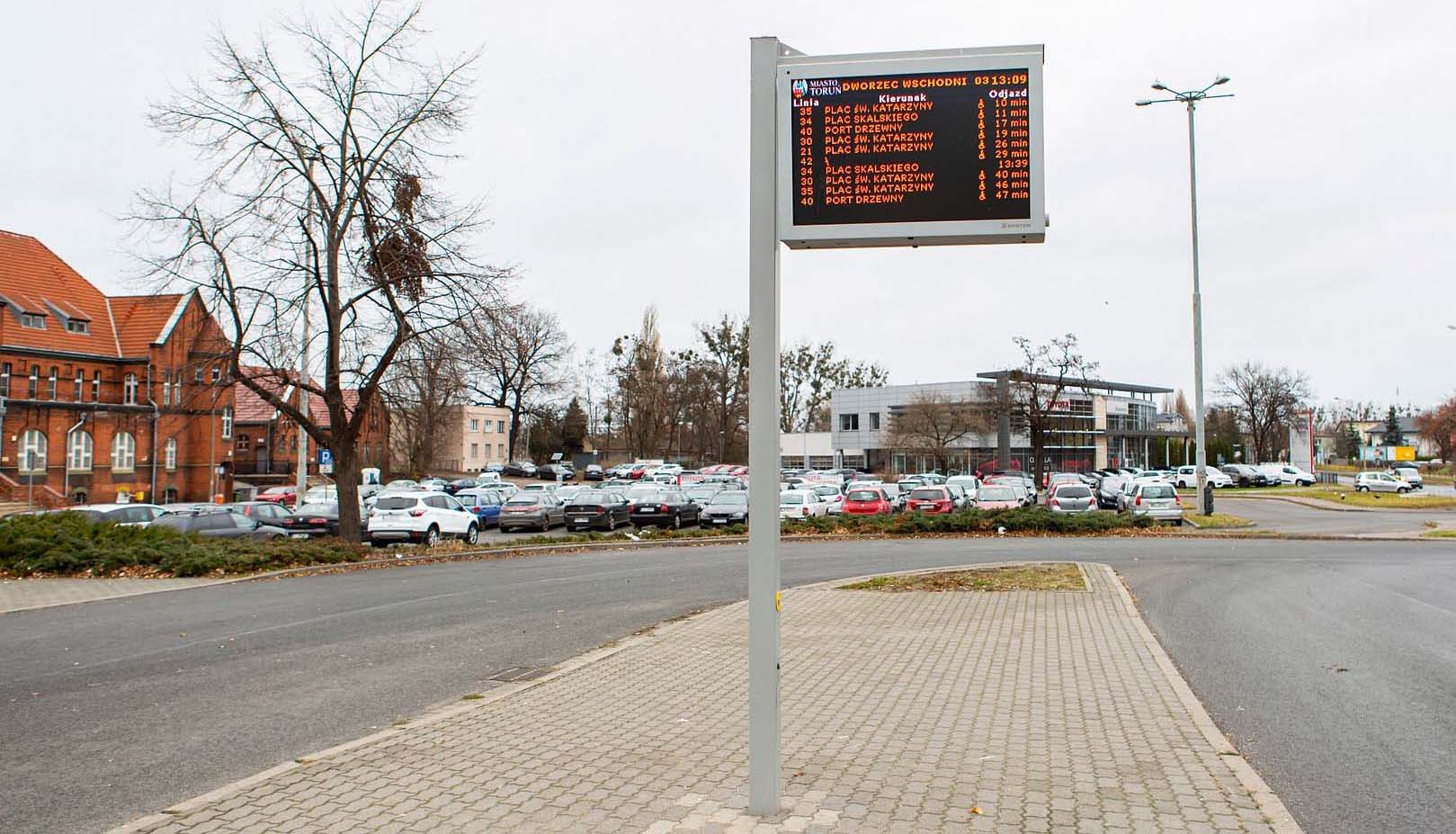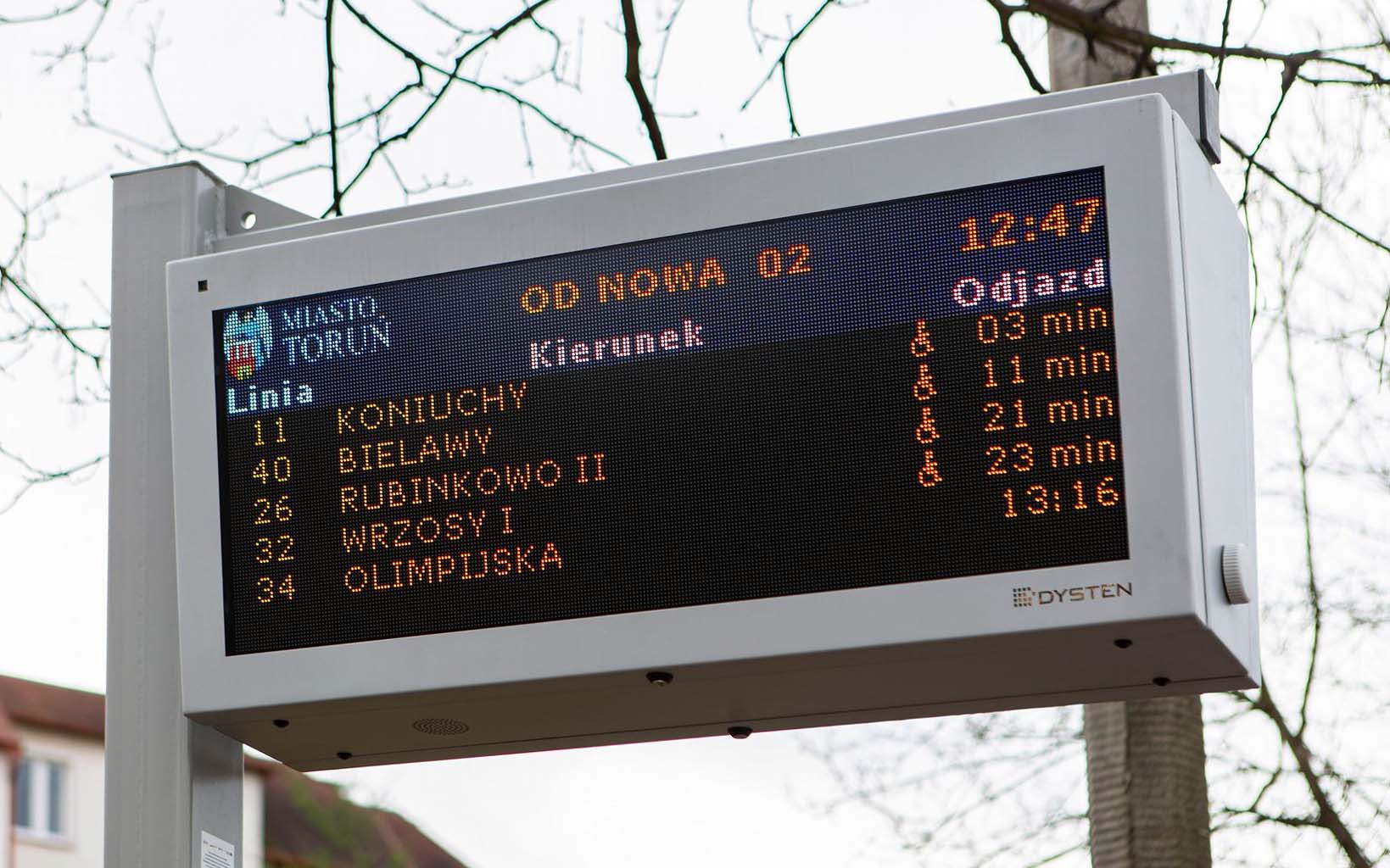TORUŃ. TWICE AS MUCH INFORMATION

Various display sizes
The real-time passenger information boards have been located according to the traffic intensity. Therefore, 3 types of displays have been used: small (with 5-row matrix), medium (7-row), and large, which display 12 rows. All devices are based on RGB LED matrices, which are able to display any full-colour content like any alphabet characters, digits, symbols, icons, animations. The PID boards are double-sided and have a V-shaped housing (in the side view) to make it easier for passengers to read the information. The departure time is dynamically converted and takes delays into account. With the visually impaired and blind in mind, the TTS (Text to speech) system has been installed, which reads information from the display when activated by pressing a key.

Public transport in Toruń
Increasing the number of stops with real-time passenger information to 144 locations is a doubling of the previous status. This is a good result compared to the rest of the country, considering that Toruń has over half a thousand stops. The city of 200,000 inhabitants is systematically taking care to improve the quality of public transport. It is developing a tram network and rolling stock – currently it has over 150 buses and 60 trams. It improves the comfort of passengers at stops by installing dynamic passenger information. All tasks in this area are carried out by the MZK w Toruniu, a municipal company, effectively acquiring large funding from EU. An interesting fact is that Toruń built tram lines very early – already in 1890 it launched the first tramway line, and in 1924 bus connections, but the latter ones were unprofitable for a long time. Today’s history of public transport is built by new challenges related to electromobility, such as electric and, possibly, hydrogen buses.
The integration of the passenger information system in Toruń is being implemented by another company.


